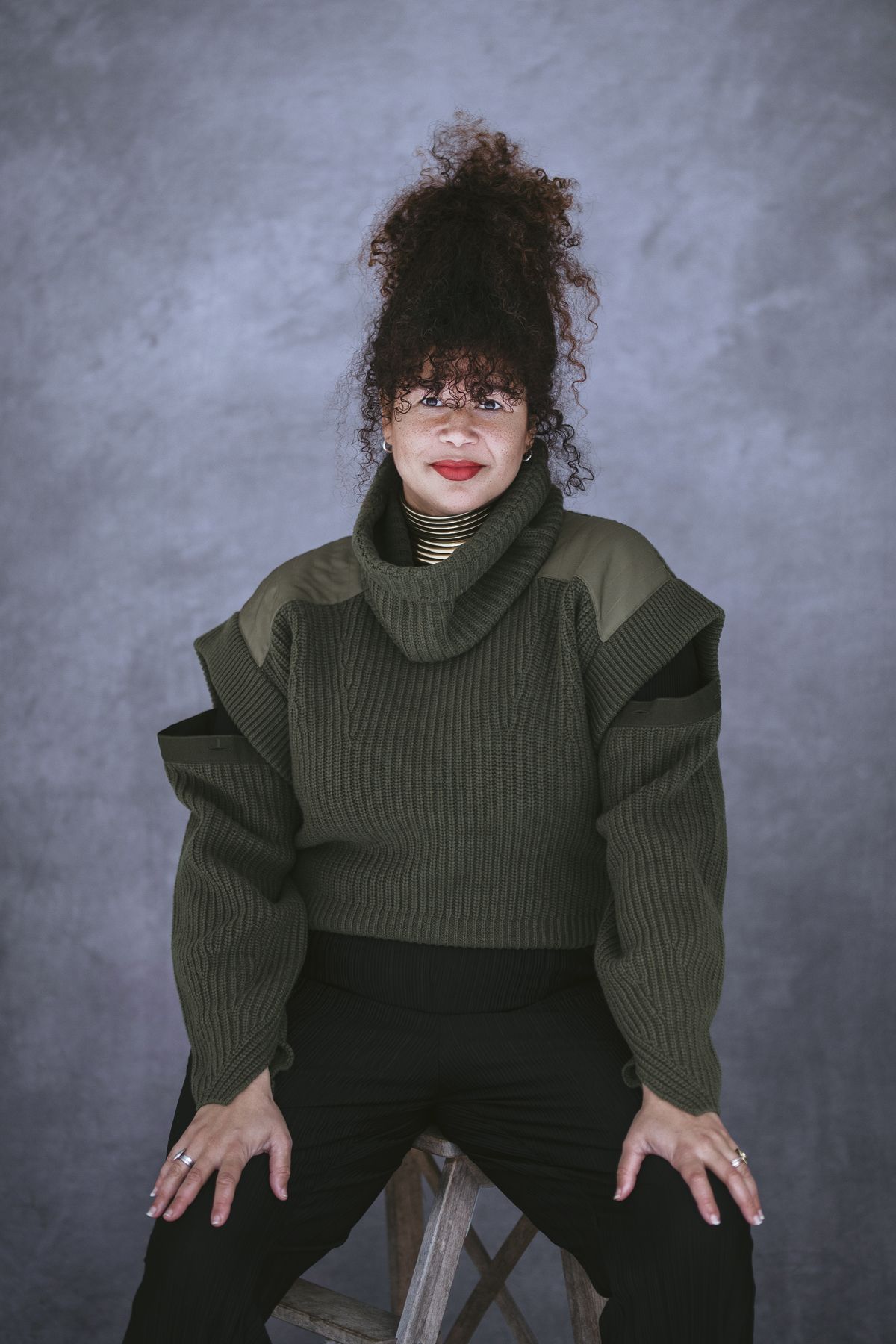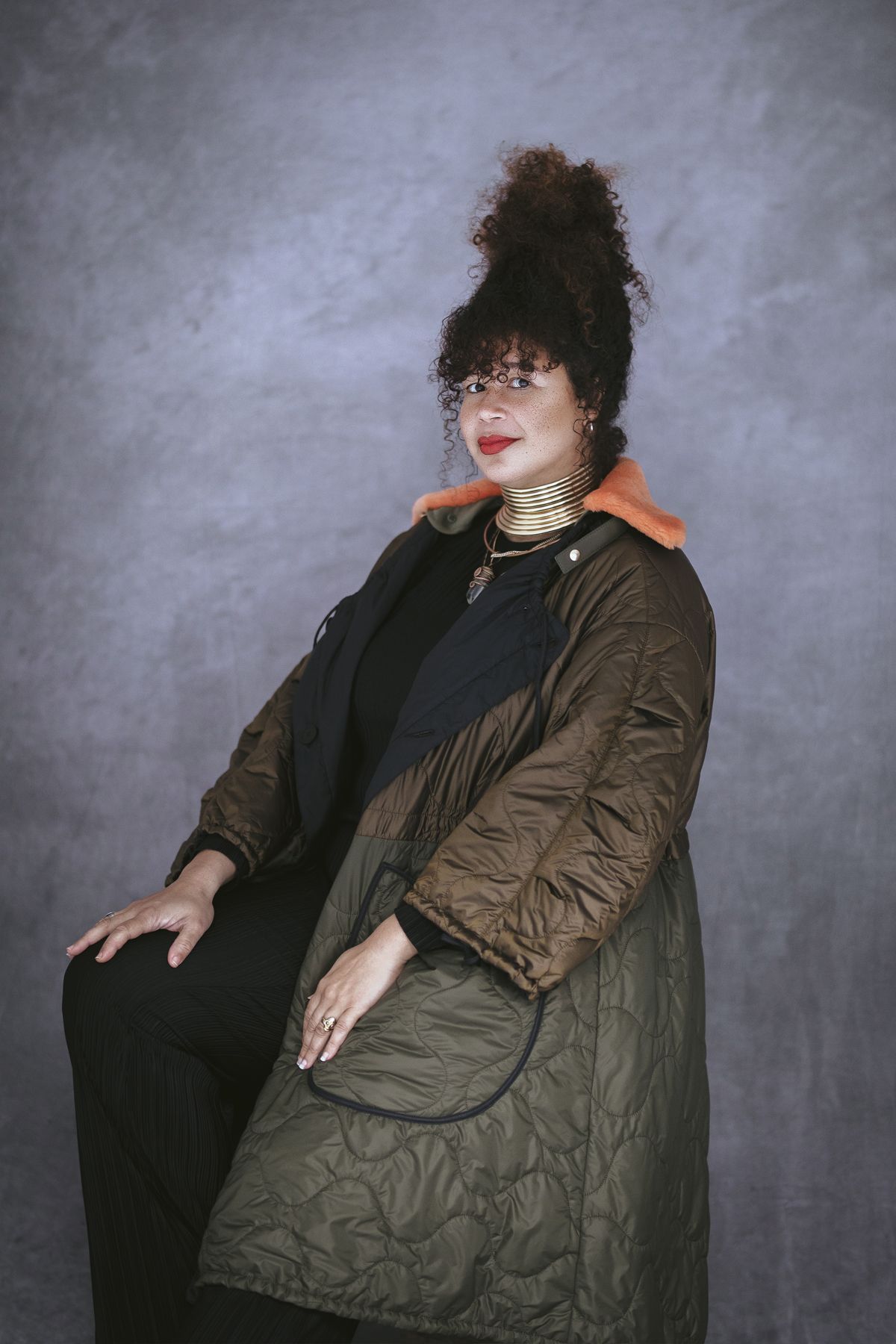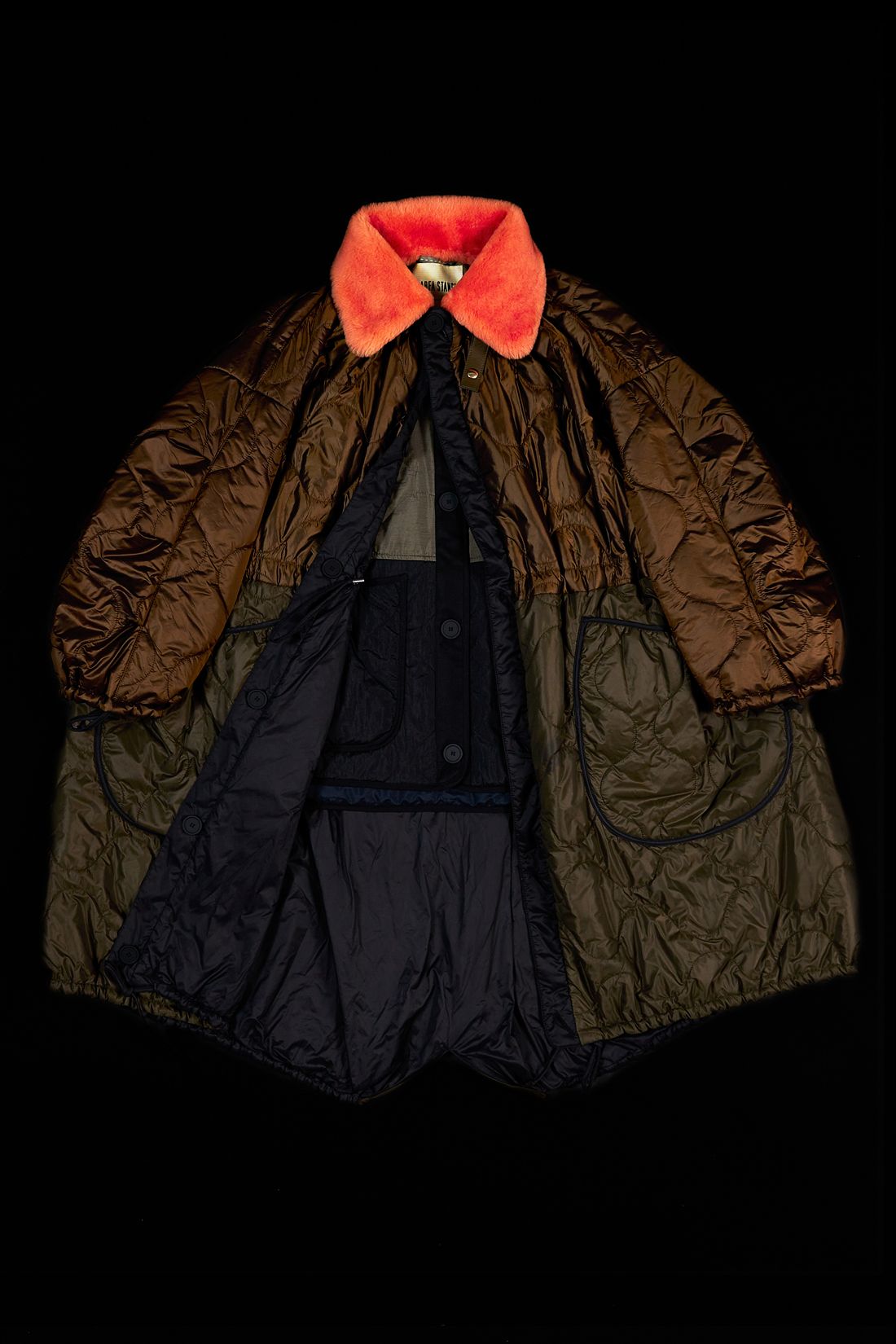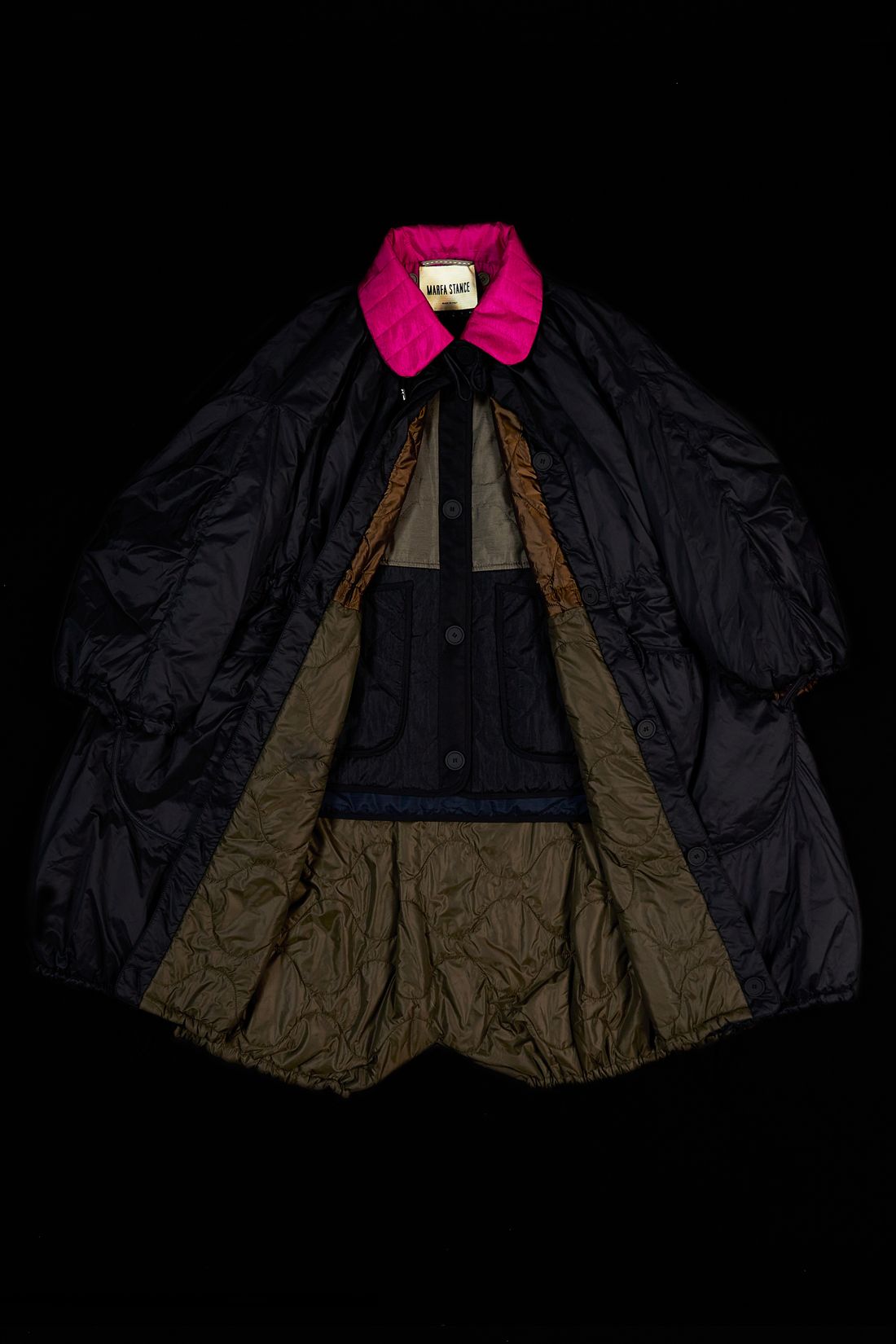ALBERTA WHITTLE
Community is at the core of everything we do and we are constantly inspired by the incredible women we are lucky enough to have on this journey with us. As a female founded and run business, we celebrate our community and muses every day, but this International Women’s Day feels particularly poignant to support and uplift women everywhere.
Today, we are delighted to spotlight Alberta Whittle as part of our Marfa Muse campaign shot by Alex Cameron. An artist, researcher and curator, Alberta is representing Scotland at the Venice Biennale this summer. She was awarded a Turner Bursary, the Frieze Artist award and a Henry Moore Foundation artist award in 2020. Alberta is a PhD candidate at Edinburgh College of Art and is a Research Associate at The University of Johannesburg.
Her creative practice is motivated by the desire to manifest self-compassion and collective care as key methods in battling anti-blackness.
#marfamuse
HOW GREEDY ARE YOU WITH PRIZES?
(Laughs) It has been a wonderful couple of years
YOUR WORK IS INSPIRED BY A SENSE OF PLACE. HOW DID YOUR UPBRINGING AND YOUR FAMILY INFLUENCE YOUR WORK?
I grew up in Barbados and my parents (a Scottish father, and a Bajan mother) who are both artists were very encouraging. They really opened up their practices to me as a child. My mother was a painter and she let me incorporate my drawings into her paintings so there was a sense of collaboration but also conversation about art and politics which happened at home.Both their work was deeply informed by place, by living in Barbados and thinking of the colonial history and what that meant. They met in the UK as art students and then had my sister. They lived between two worlds, they had experiences of the Caribbean and Europe and we were both encouraged to think about dual heritage.In many ways, because their work was always quite political it meant having a social conscience.
WHAT MEDIUMS DID THEY WORK IN?
Both were painters but my mother has moved more into textile work and when I am making my sculptural work, I feel as if I emulate her as she never had her own studio. She would find a spot in the house, usually her bedroom or on the dining table and I am very much like that.
YOU MOVED TO THE UK AS A TEENAGER, AT THE TIME WHAT STRUCK YOU MOST?
That there was no conversation around colonialism. I was surprised by how this had been forgotten. It had been obscured as there is a convenience in forgetting: to think how one’s family may have benefitted from slavery, may have benefitted from Empire. I find it odd to think that one of my Bajan grandmother’s ancestors was a Scotsman with a family who lived in Edinburgh. That’s shocking to me that his ancestors would have had no idea he sired children in the Caribbean.
A lot of your work explores Epigenetic trauma, the idea that trauma can leave a chemical mark on a person’s genes and be passed down. Was this a very conscious decision?
As someone who is neurodiverse and who has a terrible memory, I think that it’s no coincidence that so much of my work is about memory because I’m always thinking how we remember and creating strategies for myself to remember. I really do think there is a way that trauma is felt in the body, where we recognise things and recognise particular emotions. And I want my work to provoke this moment of recognition so that we can feel these histories so closely. It was the time of the bicentenary of the abolition of the slave trade when I came to Edinburgh and it was interesting to observe there were no commemorations like there had been in England.

WHY DO YOU THINK THAT IS?
When we think of the British Empire we don’t break it apart to think of Ireland, Wales and Scotland, it’s very much associated with England. When we think about Scotland, we are not thinking about the plantation economies, we’re thinking much more about mercantile trade but the mercantile trade meant profiting from slavery and Empire.
And perhaps because of this idea of Independence, there’s a sort of distancing itself from collective British history but the middle men of slavery were the Scots. They weren’t the big landowners who were mainly in England but they were still a huge part of these colonial endeavours.
You have spoken about climate colonialism in previous interviews. Was this something you felt compelled to explore?
I felt absolutely compelled. I have said in a lot of interviews that there was this period, back in 2018 and 2019 when it seemed that the weather was becoming more and more volatile. We had a really warm February in the UK and a terrible hurricane season in the Caribbean. In the Caribbean is no infrastructure for rebuilding unlike the UK and Europe where there isn’t that sense of permanent damage and re-building is possible. This climate catastrophe typified for me the luxury of amnesia.
AND YET YOU THINK WE ARE BECOMING MORE AWARE?
I have noticed a shift which is encouraging and there is a greater curiosity and sense of care which has been harnessed following the isolation of the pandemic and all the different issues of race, equality and disparity which have come up. People have been able to look more inward and ask how can I work on myself and try to be part of change rather than be standing on the side lines. I find that encouraging and it’s meant my practice has changed as there’s greater curiosity but also awareness. People are ready. Now a lot of my work, especially my film work speaks directly to the audience and shares in these moments as a way of sharing in those conversations.
You talk about a need to look after our ancestors? Why is that so important?
My interest in epigenetic trauma is also part of the hope for my ancestral communion and for correcting and addressing what has happened. In very obvious ways we inherit certain health conditions or pick up triggers and we carry that knowledge in our bodies and in our memory. It’s all passed down. I have been thinking about those moments of recognition. This for me is deep interior work and which comes with great effort.
Is your art also a form of therapy for yourself?
Most definitely. As someone who has issues with ability because of my fibromyalgia which I have had since I was child, making art has been a huge part of my recovery.
How would you encourage someone who wasn’t an artist, to use art as therapy?
I really believe that we need to listen to our body, there are all these preconceptions that one can’t be an artist etc and it’s complete nonsense.
I can’t draw a straight line – it has all sort of bumps in it. We all have an ability to be creative and it’s about stilling yourself and slowing down and thinking. What does it mean to make a mark? Perhaps work in a 2- dimensional way or maybe you want to add bits of collage and for me there are really important ways to understand my place in the world but also process what it means to be human.
A friend of mine, Grace Aneiza Ali wrote this beautiful book about Guyanese artists and there is a quote she used -and I will be misquoting it terribly – but she said migrants are artists because they remake home wherever they go. And I always think of that. As humans we make home, even people who have stayed in the same village for generations. And we all have these creative ways to take our place on the planet.
What do you feel passionately about changing?
Slowing down. I think so much about slowing down, there’s such a huge pressure to be productive and when we really slow down we really listen to ourselves but we also listen to other people better.
For me, that’s where change can happen and there’s also more space for you to be curious as well and for you to gain momentum. I think that’s where I am at. There are all sorts of issues such as justice and climate catastrophe but really, they all begin with slowing down and hopefully opening oneself up to conversations. All of my work comes from the many conversations I have had.
Photography by Alex Cameron
Interview by Carolyn Asome



